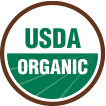There has been a growing trend of consumer interest in products that are marketed as “natural,” “environmentally friendly,” “healthy,” and “humanely raised.” Producers often use labels, terms, and certifications to verify that their products are indeed grown or produced in ways that align with consumer preferences. There are many such labels and certifications, and the variety often creates confusion. This publication provides a brief description of the most commonly used labels and certifications to help consumers understand what a particular label or certification means and to help them make more informed choices.
Labels are intended to help consumers differentiate between otherwise similar products. Some labels can only be used by producers or processors that adhere to specific guidelines that are verified by a third party. This process is called certification. There are three main purposes of labeling: to inform, to protect, and to persuade consumers. The regulation of food labeling in the United States has served to reduce risks to individual consumers’ health and safety, to increase consumers’ access to information, and to ensure fair competition among producers. There are, however, many other reasons that labels and certifications may be used, including identification of how the food was processed, how it was grown, its health or nutritional benefits, or its superior quality (in freshness, taste, etc.).
Label terms and certifications can generally be divided into those that are regulated, and those that are unregulated. The United States Department of Agriculture (USDA) or the Food and Drug Administration(FDA) usually define regulated label terms and certifications that apply to food and food products. The use of USDA- or FDA-approved labels and certifications is governed by law, and violations of use can have legal consequences. Within the USDA, the Food Safety and Inspection Service (FSIS) is the agency responsible for the truthful labeling of meat and poultry products. Due to this role, FSIS must approve any term, both regulated and unregulated, appearing on meat and poultry labels.
Unregulated terms may have generally accepted definitions but do not have legal ramifications or government verification. Many of these terms have standards and require third party verification. Some common label claims—such as “humanely raised” or “sustainably farmed”—refer to production practices for crops and livestock, but there are no USDA or FDA definitions for these terms. This circular describes common regulated and unregulated terms used in marketing food products.
Regulated Labels

The term “organic” and the use of the USDA organic seal are regulated through the National Organic Program (NOP). The NOP regulates farmers, ranchers, and food processors who are certified organic in the United States. Producers who use the“organic” term and brand must adhere to the standards created by the NOP to become and maintain organic-certified. These organic standards cover soil and water quality, pest management, livestock practices, and rules for food additives. According to the NOP, organic practices support the cycling of on-farm resources, promote ecological balance, and conserve biodiversity. These practices are aimed at maintaining or
enhancing soil and water quality as well as conserving wetlands, woodlands, and wildlife. The NOP website provides lists of approved pesticides, fertilizers, and acceptable farm materials, both synthetically derived and non-synthetically derived, which are allowed in organic production. The use of synthetic fertilizers, synthetic pesticides, sewage sludge, irradiation, and genetically engineered crops are prohibited.
Producers must follow organic standards to become or remain certified. If the history of the land is unknown, organic practices must be adopted for three years before full certification is possible. During this time, the producer will be considered “in transition.” According to the NOP standards, the certification process begins with a producer preparing an “Organic Systems Plan” with the appropriate documentation related to farm production and management. The organic certification process involves an annual farm inspection and is conducted by the certifying agency. There is a fee for certification, which is based on the amount of land being certified and other factors. The Georgia Department of Agriculture certifies independent agencies to conduct organic inspections and certifications. There is currently one organic certif